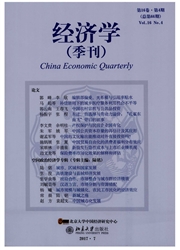

 中文摘要:
中文摘要:
本文采用中国制造业规模以上企业数据,从县级经济体的水平上考察了中国制造业是否发生“飞雁”模式的转移。我们发现,产业聚集的效应在2004年以前一直发挥着促使产业向东部沿海地区集聚的重要作用,而在这之后该效应的效果逐渐下降,表现为制造业特别是劳动密集型产业出现向中西部内陆地区移转的趋势。此时,企业的综合经营成本上升和要素成本的提高逐渐成为诱致产业转移的重要因素。
 英文摘要:
英文摘要:
Using the manufacturing enterprises data, this paper investigates whether the "flying geese" has occurred in China for its manufacturing industries. The results show that the effect of industrial cluster played an important role in prompting the industrial concentra- tion on the eastern coastal areas by 2004: But after 2004 the effect of the cluster decreased gradually. The manufacturing industries, especially the labor-intensive industries, began to migrate to the inland areas. Since 2004, the increasing overall operating costs, in particular labor cost, have become an important factor in the formation of industrial transferring.
 同期刊论文项目
同期刊论文项目
 同项目期刊论文
同项目期刊论文
 期刊信息
期刊信息
